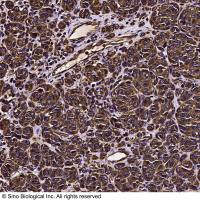Detection of High-Affinity 4-Integrin Upon Leukocyte Stimulation by Chemoattractants or Chemokines
互联网
互联网
相关产品推荐

重组猴 Macaque Regulation upon Activation Normal T cell Express Sequence/CCL5 (Rhesus Macaque RANTES/CCL5)
¥985

MS4A1/MS4A1蛋白Recombinant Human B-lymphocyte antigen CD20 (MS4A1)-VLPs (Active)重组蛋白(B-lymphocyte surface antigen B1) (Bp35) (Leukocyte surface antigen Leu-16) (Membrane-spanning 4-domains subfamily A member 1) (CD antigen CD20)蛋白
¥3420

γ-氨基丁酸试剂盒,用于样本中GABA含量检测,微量法,GABA Content Detection Kit
¥358

Vimentin Antibody, Rabbit PAb, Antigen Affinity Purified | Vimentin 兔多抗 (抗原亲和纯化)
¥1699

Pde9a/Pde9a蛋白Recombinant Mouse High affinity cGMP-specific 3,5-cyclic phosphodiesterase 9A (Pde9a)重组蛋白/蛋白
¥2328
相关问答

